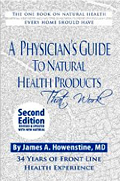By
Dr. Carolyn Dean, MD, ND
November 29, 2009
NewsWithViews.com
History Unravels Why the FDA Would Think Mercury Fillings are Harmless
"The [mercury] levels released by dental amalgam fillings are not high enough to cause harm in patients."[1a] So says the FDA (Food and Drug Administration). Three months ago they declared mercury fillings safe not only for healthy adults but also children and pregnant women.
Endless scientific research says otherwise. In high doses, mercury damages the brain, lungs and kidneys.[2] More common symptoms include nerve damage, skin discoloration, swelling, accelerated heartbeat, high blood pressure, hair loss, rashes, muscle weakness, memory impairment and insomnia.
Why then would the FDA claim that placing mercury in your mouth – where you take in air, food and water – will do no harm? A brief look at the short history of so-called "modern" dentistry provides some shocking answers…
Dentistry Began With Barbers and Blacksmiths
A couple hundred years ago we left the pulling and filling of teeth to hair-cutters and horseshoers. Barbers already worked with heads — where troublesome teeth could be found. And the blacksmith's skill with molten metal came in handy for filling cavities.
“Problems with your teeth? I'll fix you up – soon as I’m done shoeing this horse. "
Dental work proved an easy and profitable profession. Nothing like a customer in extreme pain with no one else to turn to. Many blacksmiths and barbers decided to specialize in teeth (with no medical training) and became the first dentists.
Admittedly dentists have made some advances. Hot lead gave way to gold. But gold proved rather expensive so the blacksmiths turned to mercury amalgam. Mercury wasn't just cheaper – it was also easier to fit.
As with hair and finger nails, early dentists considered teeth to be "outside the body." Thus concerns over mercury toxicity never occurred to them.
Yet, trained medical doctors were concerned – and they had research and cases to show that whether or not teeth were "outside the body" the mercury was still finding its way into the body. They were ignored by the growing establishment of “drill, fill, and bill” practitioners.
In 1859 the lay dentists banded together and formed the ADA (American Dental Association) promoting mercury amalgam fillings as safe. They refused membership and blackballed any doctor or dentist who opposed mercury fillings.
The ADA's 150-Year Love Affair with Mercury
As of July 28, 2009, the ADA’s 150-year love affair with mercury looks unshakable now that they have the FDA’s support. These two agencies have even overturned an earlier caution against the use of mercury fillings in pregnant women and children. The only warning they give is for "patients with mercury allergy." [1b]
As you can see from the above history, blacksmiths and barbers started the ADA – not medical doctors. It hasn’t progressed much farther than the days when they thought the “teeth were outside of the body” and thus it didn’t matter what you put in them.
How to Handle a Mercury Pushing Dentist
So what do you do if your dentist recommends mercury fillings? Quite frankly, there’s no point trying to reason with him or her. Most dentists aren’t going to listen. Especially to a patient. You’ll have to find a new dentist. And your dentist will probably not provide you with a referral.
Start by scanning the Yellow Pages (online or offline) for a local clinic offering composite fillings. Most dental regulatory boards forbid dentists from saying “mercury-free” in their advertisements. You may need to "read between the lines."
An easier route may be to ask a local naturopathic or chiropractic clinic for a recommendation. They usually know which dentist or dentists in your area offer mercury-free composite fillings.
Typically, finding a clinic that offers safe amalgam removal is more difficult and you may have to travel some distance. Be thorough when finding a proper clinic – removing mercury fillings improperly can be more dangerous than leaving them in your mouth. The clinic must offer a complete detoxification program before and after the procedure. And many precautions should be put in place to avoid mercury vapor from accumulating in the air.
|
Subscribe to the NewsWithViews Daily News Alerts! |
The best route, of course, is to avoid cavities in the first place. Flossing daily, rinsing your mouth out or brushing after meals, gargling with salt water and reducing sweets and avoiding soda are all easy ways to avoid the fill, drill and bill routine – whether with FDA-approved mercury fillings or common sense approved composite fillings.
References:
1a/b-
FDA
Issues Final Regulation on Dental Amalgam, FDA News Release.
2- Clifton JC 2nd (2007). "Mercury
exposure and public health." Pediatr Clin
North Am 54 (2): 237–69, viii
� 2009 Dr. Carolyn Dean MD - All Rights Reserved
Sign Up For Free E-Mail Alerts
Meet The Doctor of the Future: Thomas Edison said, “The doctor of the future will give no medicine, but will interest her or his patients in the care of the human frame, in a proper diet, and in the cause and prevention of disease.” Dr. Dean is The Doctor of The Future. She’s a medical doctor, naturopath, herbalist and acupuncturist. She’s authored 18 books including The Yeast Connection and Women’s Health, IBS for Dummies and the Magnesium Miracle. Radio, TV and magazines interview her regularly — including ABC, NBC and CBS. She's also the medical advisor for the Nutritional Magnesium Association. You’re invited to join her online wellness program Future Health Now! plus receive a free subscription to her Doctor of the Future blog.
To
subscribe or find out more go to:
Website:
www.drcarolyndean.com
Follow Dr. Dean on Twitter: http://twitter.com/DrCarolynDean
E-Mail: help@drcarolyndean.com















